University of Greenwich
Latest uploads at University of Greenwich. Looking for notes at University of Greenwich? We have lots of notes, study guides and study notes available for your school.
-
164
-
3
-
11
Majors at University of Greenwich
Notes available for the following studies at University of Greenwich
-
BA International Business 1
-
Btec 1
-
Business IT 1
-
International Business and Economics 1
-
University of Greenwich 56
Latest notes & summaries University of Greenwich
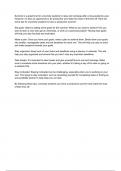
The document give tips on how to productive during summer.
- Class notes
- • 1 pages's •
-
University of Greenwich•Academic And Personal Development
Preview 1 out of 1 pages
The document give tips on how to productive during summer.
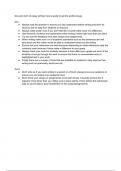
The documents are designed to helps students find effective ways to be productive and write an acceptable academic essay.
- Class notes
- • 1 pages's •
-
University of Greenwich•Academic And Personal Development
Preview 1 out of 1 pages
The documents are designed to helps students find effective ways to be productive and write an acceptable academic essay.
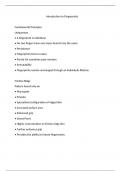
Fingerprints are the most dynamic type of evidence... They are one-of-a-kind, permanent, objective, and precise... The outcomes are definitive and final. Fingerprints can be identified to the exclusion of all others, something other sorts of forensic testing cannot do. Even DNA is not as precise, with identical twins sharing the same DNA.
- Class notes
- • 13 pages's •
-
University of Greenwich•Forensics Science
Preview 2 out of 13 pages
Fingerprints are the most dynamic type of evidence... They are one-of-a-kind, permanent, objective, and precise... The outcomes are definitive and final. Fingerprints can be identified to the exclusion of all others, something other sorts of forensic testing cannot do. Even DNA is not as precise, with identical twins sharing the same DNA.
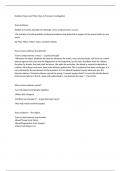
Evidence is defined as everything that can be utilised to determine whether or not a crime was committed. Evidence can be used to connect a suspect to a crime scene, confirm or contradict an alibi or statement, identify a perpetrator or victim, exonerate the innocent, induce a confession, or lead additional investigation. Not all evidence is created equal. In fact, evidence is classified into a variety of categories based on its features and dependability. An eyewitness narrative, for example...
- Class notes
- • 7 pages's •
-
University of Greenwich•Forensics Science
Preview 2 out of 7 pages
Evidence is defined as everything that can be utilised to determine whether or not a crime was committed. Evidence can be used to connect a suspect to a crime scene, confirm or contradict an alibi or statement, identify a perpetrator or victim, exonerate the innocent, induce a confession, or lead additional investigation. Not all evidence is created equal. In fact, evidence is classified into a variety of categories based on its features and dependability. An eyewitness narrative, for example...
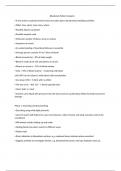
Blood pattern analysis is a helpful tool in forensic science that can aid in crime scene reconstruction. When combined with DNA analysis and other investigation findings, blood evidence can provide more conclusive and detailed details of the sequence of events.
- Class notes
- • 11 pages's •
-
University of Greenwich•Forensics Science
Preview 2 out of 11 pages
Blood pattern analysis is a helpful tool in forensic science that can aid in crime scene reconstruction. When combined with DNA analysis and other investigation findings, blood evidence can provide more conclusive and detailed details of the sequence of events.
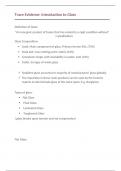
At a crime scene, glass that has been broken or fragmented is critical forensic evidence. Glass pieces from headlights may leave evidence about the unknown car at a hit-and-run crime scene. Investigators can also use window fragments or glass fractures to assess the direction, angle, and first contact of a gunshot.
- Class notes
- • 7 pages's •
-
University of Greenwich•Forensics Science
Preview 2 out of 7 pages
At a crime scene, glass that has been broken or fragmented is critical forensic evidence. Glass pieces from headlights may leave evidence about the unknown car at a hit-and-run crime scene. Investigators can also use window fragments or glass fractures to assess the direction, angle, and first contact of a gunshot.
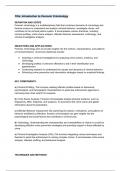
Forensic criminology combines criminology and forensic science to understand criminal behaviour, investigate crimes, and contribute to the criminal justice system. It involves criminal profiling, crime scene analysis, offender behaviour assessment, victimology, and criminal investigative analysis. Forensic criminology aims to assist in investigations, develop offender profiles, understand criminal behaviour, enhance crime prevention, and intervention strategies. Techniques used include crime sce...
- Summary
- • 2 pages's •
-
University of Greenwich•Forensic Criminology
Preview 1 out of 2 pages
Forensic criminology combines criminology and forensic science to understand criminal behaviour, investigate crimes, and contribute to the criminal justice system. It involves criminal profiling, crime scene analysis, offender behaviour assessment, victimology, and criminal investigative analysis. Forensic criminology aims to assist in investigations, develop offender profiles, understand criminal behaviour, enhance crime prevention, and intervention strategies. Techniques used include crime sce...
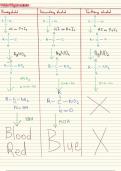
Victor meyer
- Summary
- • 1 pages's •
-
University of Greenwich•B940 M BSc/BmdS
Preview 1 out of 1 pages
Victor meyer
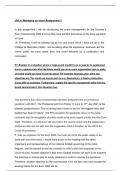
Unit 4: Managing an Event - Assignment 3. (Distinction* ) Standard Work for Unit 4, Assignment 3. This assignment has been very well structured with high-quality evaluation and justification. The document contains: P7: Stage an event, demonstrating some relevant management skills, P8: Review the success of the event in meeting aims and objectives, achieving targets and receiving good feedback from stakeholders, M4: Demonstrate effective and safe event-management skills when organising and stagin...
- Case
- • 14 pages's •
-
University of Greenwich•Unit 4 Managing an Event Assignment 3
Preview 2 out of 14 pages
Unit 4: Managing an Event - Assignment 3. (Distinction* ) Standard Work for Unit 4, Assignment 3. This assignment has been very well structured with high-quality evaluation and justification. The document contains: P7: Stage an event, demonstrating some relevant management skills, P8: Review the success of the event in meeting aims and objectives, achieving targets and receiving good feedback from stakeholders, M4: Demonstrate effective and safe event-management skills when organising and stagin...
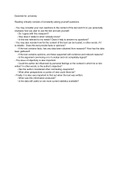
The document outline tips and trick on how to critical think when reading articles, text and anything piece of writing to help studenta on choosing academic standards picece of writing.
- Class notes
- • 1 pages's •
-
University of Greenwich•Academic And Personal Development
Preview 1 out of 1 pages
The document outline tips and trick on how to critical think when reading articles, text and anything piece of writing to help studenta on choosing academic standards picece of writing.
